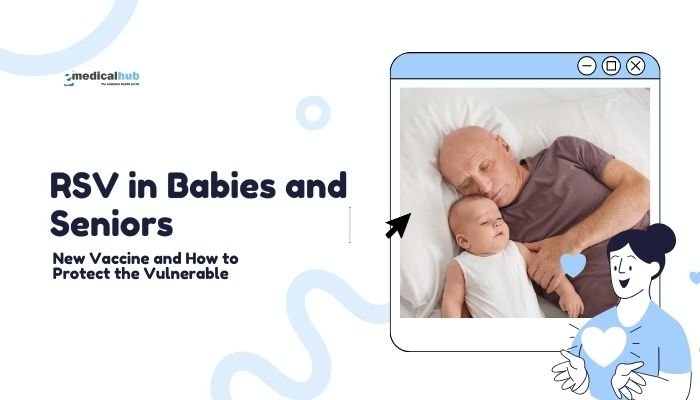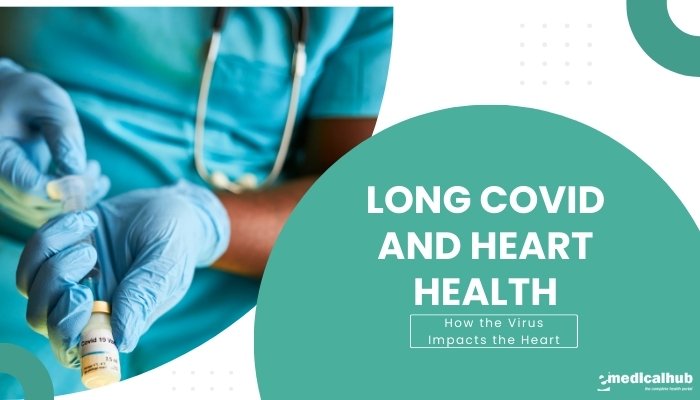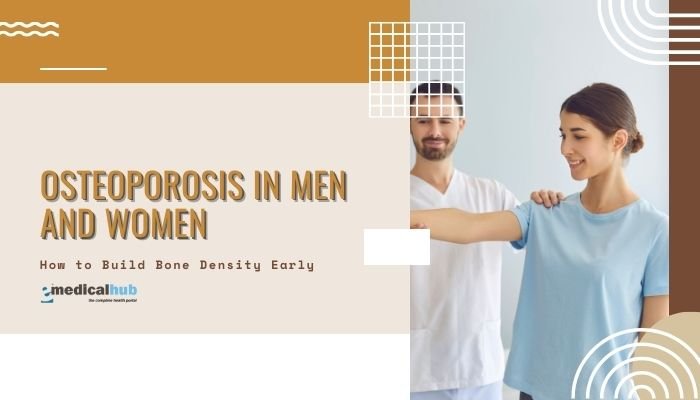Introduction
Respiratory Syncytial Virus (RSV) is a widespread pathogen that infects the respiratory tract. Although many children and adults experience RSV as a mild cold, it can trigger serious complications in infants, older adults, and those with compromised immunity.
For decades, public health experts have prioritized RSV prevention and treatment research, particularly focused on protecting very young children and older adults, who face the highest risk of pneumonia, bronchiolitis, and hospitalization.
Excitingly, recent developments include the approval of new RSV vaccines targeting older adults and maternal vaccines aimed at protecting newborns via maternal antibodies.
This article explores the basics of RSV, the reasons it’s especially dangerous for babies and seniors, the latest vaccine breakthroughs, and additional steps to keep vulnerable populations safe.
Understanding the full scope of RSV’s impact can ensure that families and caregivers remain vigilant while benefiting from these advances in prevention.
Understanding RSV: Key Facts
What Is RSV?
- Virus Family: RSV is a member of the Pneumoviridae family, genus Orthopneumovirus.
- Transmission: Primarily through respiratory droplets when an infected person coughs or sneezes, or by touching contaminated surfaces (like doorknobs, toys) and then touching the face.
- Seasonal Patterns: In many regions, RSV has a peak season in fall and winter, but patterns differ geographically.
Typical Symptoms
- Mild Cases: For healthy children and adults, RSV often appears as a cold-like illness—runny nose, congestion, cough, mild fever, and malaise.
- Severe Infections: Infants and seniors can develop significant lower respiratory tract infections, such as bronchiolitis or pneumonia. Signs may include wheezing, difficulty breathing, and high fever.
Prevalence and Impact
- Children: Most kids get RSV by age 2; it’s a top cause of infant hospitalization for respiratory illness.
- Older Adults: RSV can cause severe complications, contributing to thousands of hospital admissions and fatalities each year, especially those ≥65 or with underlying conditions.
- Varying Immunity: Though prior infection confers partial immunity, re-infections are common, sometimes presenting milder symptoms but still risky in vulnerable cohorts.
Bottom Line: RSV is a leading cause of acute respiratory infections in the extremes of age, overshadowed at times by other viruses but no less formidable in certain groups.
RSV in Babies: Why So Dangerous?
Unique Susceptibility of Infants
- Underdeveloped Lungs: Neonates and young infants have smaller airways, so inflammation or mucus accumulation from RSV can severely impede airflow.
- Immune System Immaturity: Infants haven’t fully developed immunologic defenses, leaving them less capable of combating infections.
- Rapid Progression: An infant who starts with mild cough or congestion can progress to wheezing and respiratory distress in a short span.
Clinical Manifestations in Young Children
- Bronchiolitis: Inflammation of the small airways (bronchioles) leads to wheezing, crackles, difficulty feeding, or retractions (pulling in of chest wall).
- Poor Feeding: Because nasal congestion complicates sucking, babies might feed less, risking dehydration.
- Apnea: Some very young or premature infants might exhibit brief pauses in breathing.
Risk Factors for Severe Disease
- Prematurity: Preterm babies often have underdeveloped lungs, making them particularly prone to severe RSV.
- Congenital Heart or Lung Conditions: This can compound oxygenation challenges.
- Low Birth Weight: Weaker physiologic reserves hamper fighting infection.
Note: Prompt medical attention is critical if an infant with RSV shows labored breathing, refusal of fluids, or lethargy.
RSV in Seniors: A Hidden Threat
Why Older Adults Are Affected
- Aging Immune System: Immunosenescence reduces the body’s capacity to clear the virus effectively.
- Comorbidities: Conditions like COPD, heart disease, or diabetes predispose older adults to severe respiratory complications.
- Similar to Flu or COVID-19: RSV can mimic or coincide with these infections, blurring diagnosis and increasing hospitalization risk.
Typical Presentations in Seniors
- Respiratory Distress: Exacerbation of chronic conditions (e.g., emphysema) or pneumonia.
- Fatigue, Weakness: Virus can drain energy, hamper mobility, possibly leading to functional decline.
- Complications: Hospitalization rates in seniors with RSV can approach the same magnitude as those with influenza.
Mortality and Morbidity
- Underestimated Burden: Because RSV historically was overshadowed by flu, it might not always be tested or recognized in older patients, leading to incomplete data.
- High Cost: RSV hospitalizations in older adults impose significant healthcare and mortality tolls.
Implication: Vigilance, particularly during peak RSV season, and newly available vaccination can mitigate these outcomes.
New RSV Vaccine Developments
Introduction to RSV Vaccines
- Historical Challenge: Early RSV vaccine trials decades ago faced setbacks, including “vaccine-enhanced” illness in children.
- Recent Breakthroughs: Advances in structural virology and technology have led to new safe, efficacious vaccine candidates.
Vaccines for Older Adults
- FDA/EMA Approvals: In 2023, the U.S. FDA approved the first vaccines for individuals 60+, developed by major pharmaceutical companies (e.g., GSK, Pfizer).
- Mechanism: These are subunit or recombinant vaccines targeting the RSV F protein in a stabilized prefusion conformation, aiding the immune system to mount a robust neutralizing response.
- Effectiveness: Clinical trials show meaningful reduction in symptomatic RSV infection and lower risk of severe complications, though data evolves with real-world application.
Maternal RSV Vaccine for Infant Protection
- Rationale: Maternal immunization can pass RSV-specific antibodies through the placenta, offering passive immunity to newborns in their first few months.
- Regulatory Status: As of late 2023, a maternal RSV vaccine (e.g., from Pfizer) has gained or is seeking approval in several jurisdictions. Trials suggest a good safety profile and reduced infant hospitalizations from RSV.
- Implementation: Typically administered during late pregnancy (e.g., weeks 24–36) to maximize antibody transfer.
Potential Impact
- Reducing Hospital Burden: Widespread vaccination of pregnant women and seniors can markedly curtail severe RSV cases.
- Combination with Flu/COVID Shots?: Some foresee future “3-in-1” adult respiratory vaccine scenarios. Current strategies revolve around separate shots.
Next Steps in Vaccine Research
- Pediatric Vaccines: Investigating safe direct immunization for young children, though maternal vaccination might remain the prime approach for neonates.
- Longevity of Immunity: The durability of these new RSV vaccines remains under observation, possibly necessitating annual or periodic boosters.
Treatment and Supportive Care
Outpatient Management
- Supportive Therapy: Adequate fluids, rest, fever management with acetaminophen/ibuprofen for mild cases.
- Monitoring: Watch for signs of respiratory distress, dehydration, or increased fatigue.
Hospital Care for Severe Cases
- Oxygen Supplementation: For those with low oxygen saturation, particularly babies or seniors with pneumonia.
- IV Fluids: Rehydration if oral intake is poor.
- Nebulized Brnchodilators: In some contexts, though the benefit for RSV specifically is debated.
- High-Risk Infants: Infants with severe lung disease or complex heart conditions may require advanced support like mechanical ventilation or ECMO in extreme cases.
Pharmacological Interventions
- Ribavirin: An antiviral rarely used for RSV in severe immunocompromised patients; extremely limited application.
- Monoclonal Antibodies: Palivizumab (Synagis) prophylaxis for high-risk infants, not a treatment but a preventive measure.
- Future Antivirals: Ongoing research aims to discover more direct-acting RSV antivirals that are safer and more effective.
Preventing RSV Spread
General Hygiene Practices
- Handwashing: Possibly the single most important measure. Wash for 20 seconds with soap and water or use alcohol-based sanitizer.
- Cover Coughs and Sneezes: Tissues or inner elbow help confine droplets.
- Avoid Close Contact: People who show respiratory symptoms. If symptomatic, stay home from work/school.
Protecting Infants and High-Risk Individuals
- Limit Exposure: Keep newborns away from large crowds or sick individuals, especially during RSV high season.
- Surface Sanitation: Regular cleaning of doorknobs, toys, remote controls.
- Mask Use: Caregivers with cold-like symptoms can wear masks around vulnerable infants or seniors to reduce droplet spread.
Environmental Controls
- Ventilation: Good airflow lowers concentrated virus-laden aerosols.
- Avoid Smoking: Secondhand smoke irritates airways, making children more susceptible to severe infections.
Prophylactic Monoclonal Antibody (Palivizumab)
- Who Qualifies: Infants with certain risk factors (e.g., born prematurely, congenital heart disease). Typically given monthly during RSV season.
- Not a Vaccine: Rather a passive immunity measure. Very effective but costly, so used for strict indications.
Addressing Common Myths about RSV
“RSV Is Harmless; Just a Common Cold”
- Reality: While many children/adults get mild cases, RSV can lead to severe, life-threatening pneumonia in infants or immunocompromised seniors.
“Only Babies Get RSV”
- Reality: Adults can also catch RSV, and it can be serious in older adults with chronic conditions.
“We Don’t Need Another Vaccine”
- Reality: RSV is a major cause of pediatric hospitalization. For seniors, it can be as dangerous as influenza. The new vaccines address a longstanding gap.
“If My Child Gets RSV Once, They’re Immune Forever”
- Reality: Re-infections are common because immunity is partial and wanes over time.
Caring for a Sick Child or Elderly Individual
Home Care Strategies
- Hydration: Offer frequent fluids. For infants, ensure they maintain breastfeeding or formula intake if possible.
- Nasal Suctioning: Gentle removal of mucus with bulbs or aspirators can ease breathing for babies.
- Humidifier: Using a cool-mist humidifier might relieve congestion.
Warning Signs Prompting Medical Attention
- Increased Work of Breathing: Rapid respirations, flaring nostrils, chest retractions.
- Lethargy or Confusion: In seniors, confusion can be an early sign of low oxygen or infection severity.
- High or Persistent Fever: Particularly if unresponsive to medication.
Emotional Support
- Calm Environment: Minimizing stress can help with rest and faster recovery.
- Caregiver Resources: If caring for a loved one at home becomes overwhelming, reach out for respite care or professional guidance.
Outlook and Future Directions
Monitoring New Strains
- Viral Evolution: Like other respiratory viruses, RSV could evolve. Vigilant surveillance ensures updated vaccines remain relevant.
- Global Collaboration: WHO and national agencies coordinate to track RSV patterns, share best practices.
Public Health Approaches
- Vaccination Rollout: Widespread uptake of new RSV vaccines among seniors and targeted maternal immunizations for newborns can significantly reduce hospital burden.
- Holistic Pediatric Care: Ongoing postpartum follow-up ensures early detection of respiratory infections.
Research Gaps
- Antiviral Treatments: Development of more effective outpatient antiviral regimens.
- Long-Term Immunity: Understanding how to produce robust, durable immunity across multiple RSV exposures or immunizations.
Conclusion
RSV is a complex virus that can strike from infancy to advanced age, posing a spectrum of risks from mild colds to severe, life-threatening conditions like pneumonia or bronchiolitis. While it’s a leading cause of pediatric hospitalizations each winter, seniors also face elevated vulnerability due to comorbidities and weakened immune responses. Fortunately, new vaccines mark a major milestone, offering targeted protection to older adults and expectant mothers seeking to shield newborns.
Meanwhile, fundamental preventive measures—meticulous hygiene, cautious contact avoidance, and consistent environmental sanitation—remain vital. Prompt detection of symptoms, supportive treatment, and timely medical care can dramatically lessen the disease’s toll. Harnessing the synergy of vaccine uptake, personal protective behaviors, and healthcare resources ensures that both children and older adults are safer. Ultimately, an informed and proactive community can curb RSV outbreaks and safeguard those most susceptible to serious illness.
Frequently Asked Questions (FAQ)
- Is RSV the same virus as the flu?
- No, RSV is different from influenza. Both cause respiratory illness but are distinct viruses with separate vaccines.
- At what age do newborns qualify for monoclonal antibody prophylaxis (palivizumab)?
- Typically given to high-risk infants (e.g., prematurity, certain heart/lung diseases) during RSV season, per specialized guidelines.
- How soon after birth can a maternal RSV vaccine protect my baby?
- Maternal vaccination in late pregnancy can confer antibodies to the fetus. Upon birth, babies are often covered for the first few months, though timing and durability vary.
- Is wearing a mask effective for preventing RSV?
- Yes. While not as commonly mandated, mask use in high-risk settings or for symptomatic individuals can reduce RSV spread, similar to how it helps with other respiratory infections.
- What if my older parent or grandparent has mild cold symptoms?
- If they have risk factors (e.g., heart disease, COPD), check for RSV or seek medical guidance. Early evaluation prevents complications.
- Should my child with mild RSV still attend daycare/school?
- Typically, if they’re symptomatic with active infection, staying home is recommended to avoid spreading it to others.
- Can you get RSV more than once in the same season?
- Re-infections in the same season are rare but possible, usually mild if the immune response from earlier infection is fresh.
References
- World Health Organization (WHO). RSV Key Facts. 2022.
- Centers for Disease Control and Prevention (CDC). Respiratory Syncytial Virus Infection (RSV). 2023.
- Shi T, Denouel A, Tietjen AK, et al. Global disease burden estimates of RSV in young children. Lancet. 2017;390(10098):946-958.
- Rha B, Curns A, Lively JY, et al. Respiratory Syncytial Virus-Associated Hospitalizations Among Young Children in the United States, 2016-2020. Clin Infect Dis. 2022;75(9):e1267-e1274.
- Falsey AR, Formica MA, Walsh EE. Current status of RSV immunoprophylaxis and vaccines. Infect Dis Clin North Am. 2021;35(2):395-409.
- Anderson EJ, Carosone-Link PJ, Yogev R, et al. Detection of extended viral presence in immunocompromised children. J Pediatr. 2020;226:192-197.
- Higgins D, Trujillo C, Keech C. Advances in RSV vaccine development. Vaccine. 2016;34(24):2874-2881.
- Feldman SA, Hendricks DA, Wang D, et al. RSV vaccine approaches: lessons from the past. Curr Opin Virol. 2019;34:70-78.
- Coultas JA, Smyth RL, Openshaw PJM. Bronchiolitis. Lancet. 2019;394(10198):1881-1890.
- Walsh EE. Respiratory syncytial virus infection in elderly and high-risk adults. Infect Dis Clin North Am. 1997;11(1):43-55.
- Madhi SA, Polack FP, Abate D, et al. A maternal vaccine to protect infants from RSV. N Engl J Med. 2023;388(6):543-555.
- van Summeren J, Marbus S, Korthals Altes H, et al. Prolonged seasonality and increased incidence of RSV after COVID-19. Lancet Infect Dis. 2022;22(10):1498-1500.
- Piedimonte G, Perez MK. Educating parents about preventing RSV. Pediatr Pulmonol. 2022;57(2):394-401.
- American Academy of Pediatrics. Updated Guidance on RSV Prophylaxis. 2023.




